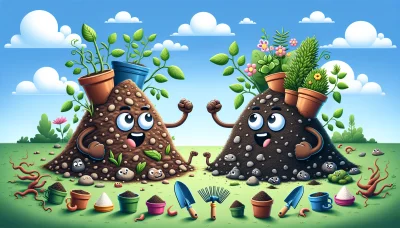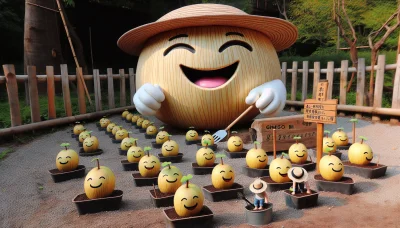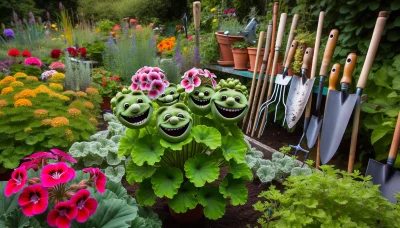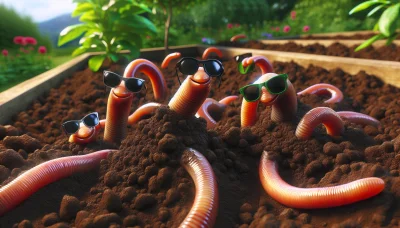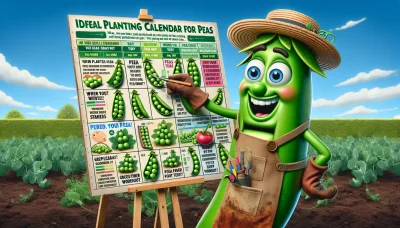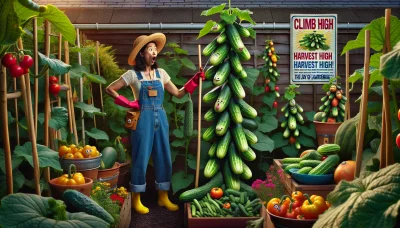Garden Updates Feed Quiz
Test Your Knowledge
Question of
Garden Updates Feed: Your Guide to Cultivating Success
Keeping up with the latest gardening trends, techniques, and tips is crucial for anyone looking to enhance their green space. Whether you're a seasoned gardener or just starting out, staying informed can help you make better decisions for your plants, tackle common challenges more effectively, and explore new, innovative approaches to gardening. From understanding the nuances of soil health to mastering the timing of planting and harvesting, the world of gardening is always evolving. By staying updated, you ensure that your garden not only thrives but also becomes a source of pride and joy.
Top Gardening Trends for the Season
- Sustainable Practices
- Native Planting
- Vertical Gardens
Essential Gardening Tips for Beginners
Starting your gardening journey can be both exciting and overwhelming. However, focusing on a few key aspects can make all the difference in nurturing a thriving garden. First and foremost, soil preparation is crucial. Begin by testing your soil to understand its type and pH level, as this will guide you in amending it with the right nutrients and organic matter. A well-prepared soil forms the foundation of a healthy garden.
When it comes to plant selection, opt for native plants or those well-suited to your climate and soil type. These plants are more likely to thrive with minimal intervention. Consider starting with easy-to-grow vegetables or flowers if you're a beginner, as they can be more forgiving and offer quick rewards for your efforts.
Watering techniques are also essential for garden success. The key is to water deeply but infrequently, encouraging plants to develop deep root systems. Early morning is the best time to water your garden, reducing evaporation and the risk of fungal diseases. Always water at the base of the plants, avoiding wetting the foliage, to further minimize disease risks.
By focusing on these fundamental aspects, you'll be well on your way to cultivating a beautiful and productive garden. Remember, gardening is a journey of learning and discovery, so be patient and enjoy the process.
Innovative Gardening Techniques to Try
Exploring advanced gardening methods opens up a new world for both novice and experienced gardeners alike. Techniques such as hydroponics, aquaponics, and permaculture are at the forefront of this green revolution. Hydroponics, the art of growing plants without soil, uses nutrient-rich water solutions to feed plants, allowing for faster growth and higher yields. Aquaponics combines this method with fish farming, where fish waste provides organic food for the plants, and the plants, in turn, purify the water for the fish. It's a symbiotic system that mimics natural ecosystems. Permaculture takes a holistic approach, designing gardens that mimic the patterns and relationships found in nature. It aims to create sustainable and self-sufficient agricultural ecosystems. Each of these methods offers a unique way to maximize efficiency and sustainability in gardening practices, making them worth exploring for anyone looking to push the boundaries of traditional gardening.
Garden Pest Management: Natural Solutions
Emphasizing the importance of biodiversity and eco-friendly practices, here are some organic methods to control pests and diseases in your garden:
- Companion Planting: Grow plants that repel pests naturally next to your vegetables and fruits. For instance, marigolds can deter nematodes and other pests.
- Natural Predators: Encourage beneficial insects and animals that eat pests, such as ladybugs, lacewings, and birds, by providing a welcoming habitat for them.
- Neem Oil: Use neem oil as a natural pesticide. It's effective against a wide variety of pests and is safe for beneficial insects when used correctly.
- Diatomaceous Earth: Sprinkle diatomaceous earth around your plants to physically deter pests. It's a natural, non-toxic powder made from crushed fossils of freshwater organisms and marine life.
- Soap and Water Spray: A mild solution of soap and water can be effective against certain pests like aphids and spider mites. Just be sure to use a biodegradable soap and apply in the cooler part of the day to avoid leaf burn.
- Row Covers: Use floating row covers to physically block pests from reaching your plants while still allowing light and water to penetrate.
- Healthy Soil Practices: Maintain healthy soil with regular additions of compost and organic matter. Healthy plants are less susceptible to pests and diseases.
- Manual Removal: Sometimes, the best method is the direct one. Regularly inspect your plants for pests and remove them by hand when possible.
- Trap Crops: Plant trap crops that are more attractive to pests than your main crops. This method can divert pests away, protecting your primary plants.
Monthly Garden Maintenance Checklist
| Month | Pruning | Fertilization | Planting |
|---|---|---|---|
| January | Prune roses | Apply lime to soil | Start seedlings indoors |
| February | Trim deciduous trees | Feed winter-flowering plants | Plant bare-root trees and shrubs |
| March | Cut back ornamental grasses | Apply balanced fertilizer | Plant spring bulbs and vegetables |
| April | Prune spring-flowering shrubs after blooming | Feed roses | Sow summer-flowering seeds |
| May | Deadhead early spring flowers | Apply mulch and compost | Plant out summer bedding |
| June | Thin out new growth on trees | Fertilize vegetable garden | Plant perennials and annuals |
| July | Prune summer-flowering shrubs | Feed with a high-potassium fertilizer | Start fall vegetable seeds indoors |
| August | Deadhead flowers regularly | Apply slow-release fertilizer | Sow hardy annuals for next year |
| September | Trim hedges and shape evergreens | Feed lawns | Plant spring-flowering bulbs |
| October | Cut back perennials | Apply autumn lawn fertilizer | Harvest and plant fall vegetables |
| November | Prune roses and fruit trees | Add bone meal for root crops | Plant bare-root roses |
| December | Protect plants from frost | Check pH levels and adjust | Plan next year's garden |



